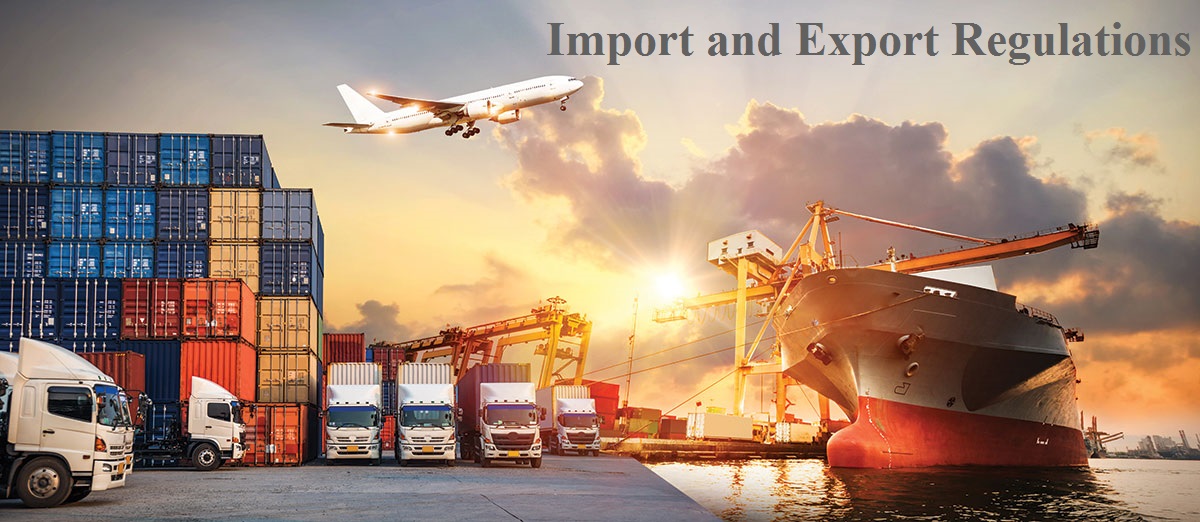Understanding the regulations, tariffs, and trade agreements that govern the import and export of vegetables and fruits.
Introduction
In today’s interconnected global economy, the movement of goods and services across international borders is a common practice. However, this seemingly straightforward process is governed by a web of intricate government-imposed rules and requirements known as import and export regulations. These regulations serve various purposes, including ensuring consumer safety, safeguarding national security, controlling the flow of specific products, and collecting customs duties and taxes. The dynamic nature of international trade means that import and export regulations can vary significantly from one country to another and can change over time. Consequently, it is imperative for businesses and individuals engaged in international trade to remain well-informed and compliant with these regulations. In this comprehensive exploration, we will delve into the multifaceted world of import and export regulations, shedding light on their key aspects, implications, and strategies for successful navigation.

1. Customs Declarations
The Foundation of International Trade
One of the foundational elements of international trade is the customs declaration. When goods traverse international borders, they must be declared to the respective customs authorities. This process entails providing comprehensive information about the goods, including their value, origin, and other pertinent details. The significance of accurate and complete customs declarations cannot be overstated, as errors or omissions can lead to delays, penalties, or even the seizure of goods. These declarations serve as the bridge between the exporting and importing countries’ regulatory systems, facilitating the smooth flow of goods while ensuring compliance with a range of regulations.
2. Tariffs and Duties
The Financial Facet of International Trade
Tariffs and duties represent a crucial aspect of import and export regulations, with profound financial implications for businesses engaged in international trade. Many countries impose tariffs, which are essentially taxes on imported goods. These tariffs serve multiple purposes, including protecting domestic industries from foreign competition and generating revenue for the government. The rates and types of tariffs can vary widely, depending on the country and the nature of the imported goods. Importers and exporters must be acutely aware of these charges and incorporate them into their pricing strategies to remain competitive and profitable in the international marketplace.
3. Import and Export Licenses
Navigating the Regulatory Maze
Certain products, particularly those with implications for national security, the environment, or health and safety, may require special licenses or permits to be imported or exported. These licenses are typically issued by government agencies responsible for regulating specific industries or sectors. The acquisition of these licenses can be a complex and time-consuming process, necessitating a comprehensive understanding of the relevant regulations and compliance requirements. For businesses involved in the trade of such products, securing the necessary licenses is not just a legal obligation but a strategic imperative to avoid regulatory violations and associated penalties.
4. Trade Restrictions
Geopolitical Dynamics in International Trade
The world of international trade is not immune to geopolitical dynamics, and governments often impose trade restrictions on specific products or with particular countries for political, economic, or security reasons. These restrictions can take various forms, including embargoes, sanctions, or export controls. Embargoes prohibit the trade of certain goods with specific countries, often as a result of diplomatic tensions or human rights concerns. Sanctions involve restrictions on trade, financial transactions, or other interactions with countries or entities deemed to be in violation of international norms. Export controls are measures taken to restrict the export of goods that could potentially be used for military purposes or pose other security risks. Navigating these intricate geopolitical considerations is a significant challenge for international businesses, requiring a nuanced understanding of the evolving global landscape.
5. Documentation
The Backbone of International Trade
In the realm of international trade, documentation is the backbone that supports the flow of goods across borders. Properly prepared documents are essential for the smooth progression of goods through customs and compliance with import and export regulations. Commonly required documents include invoices, bills of lading, certificates of origin, packing lists, and import/export licenses. The specific documents needed can vary significantly from one country to another and depend on the type of product being traded. Accurate and complete documentation not only expedites the customs clearance process but also minimizes the risk of regulatory violations and associated penalties.
6. Product Standards and Regulations:
Ensuring Quality and Safety
Many countries impose product standards and regulations that imported goods must meet to ensure the safety and well-being of consumers and protect domestic industries. These standards often cover a range of aspects, including product safety, quality, labeling, and environmental impact. Non-compliance with these standards can result in goods being rejected, seized, or recalled, leading to financial losses and reputational damage for businesses. Consequently, it is imperative for importers and exporters to remain vigilant about staying compliant with these regulations and to invest in quality control and product testing processes to meet the required standards.
7. Trade Agreements
Shaping International Trade Dynamics
In the ever-evolving landscape of international trade, trade agreements play a pivotal role in shaping import and export regulations. These agreements are negotiated between countries and can have a profound impact on trade dynamics. They often aim to reduce or eliminate tariffs, simplify customs procedures, and promote trade between member countries. Trade agreements can be bilateral (between two countries), regional (involving multiple countries within a region), or multilateral (involving many countries globally). A well-known example of a trade agreement is the North American Free Trade Agreement (NAFTA), which has since evolved into the United States-Mexico-Canada Agreement (USMCA). The terms of these agreements can significantly influence the cost, efficiency, and complexity of international trade operations.
8. Customs Brokerage
Navigating the Regulatory Labyrinth
The complexities of customs procedures, documentation, and compliance with import and export regulations often necessitate the expertise of customs brokers. These professionals are well-versed in the intricacies of international trade regulations and provide invaluable assistance to importers and exporters. Customs brokers facilitate the smooth passage of goods through customs by ensuring that all required documentation is accurate and complete, thus reducing the risk of delays or regulatory violations. They also possess a deep understanding of tariff classifications and can advise businesses on the most advantageous trade strategies to minimize customs duties and taxes.
9. Compliance and Penalties
The Consequences of Non-Compliance
The importance of compliance with import and export regulations cannot be overstated. Non-compliance can result in a litany of consequences, ranging from fines and penalties to significant delays in the movement of goods and even legal repercussions. Businesses engaged in international trade must invest in robust compliance efforts to stay abreast of evolving regulations and minimize the risk of non-compliance. This includes conducting regular audits of import and export activities, ensuring that employees are adequately trained in compliance matters, and staying informed about changes in regulations and trade agreements that could impact their operations.
10. Regulatory Agencies
Guardians of International Trade
In every country, various regulatory agencies are responsible for enforcing import and export regulations. These agencies play a critical role in ensuring the integrity of the regulatory framework and safeguarding national interests. In the United States, for example, the U.S. Customs and Border Protection (CBP) is the primary agency responsible for enforcing these regulations. CBP oversees the entry and exit of goods, collects customs duties and taxes, and enforces trade-related laws and regulations. Importers and exporters must establish clear lines of communication and cooperation with these regulatory agencies to facilitate compliance and address any issues or concerns that may arise during the import and export process.
Conclusion
Navigating the Import and Export Regulatory Maze In the complex and ever-evolving world of international trade, import and export regulations are the threads that bind Therefore It’s essential for individuals and businesses involved in the import and export of fruits and vegetables to conduct thorough research on the regulations of both the exporting and importing countries. Consulting with experts in agricultural trade and compliance, such as customs brokers or trade associations, can also be valuable in navigating the complex regulatory landscape. Additionally, staying informed about changes in regulations and trade agreements is crucial to ensure smooth international trade in fruits and vegetables.
Rad Golden Leaf General Trading LLC is a reputable company specializing in the export of fruits and vegetables, adhering to international trade principles. Additionally, the company is involved in the import of raw tobacco materials. Their strong commitment to quality and compliance with industry standards has established them as a trusted player in the global agricultural and tobacco supply chain. Their dedication to excellence ensures that customers receive top-notch products and services in both the export and import sectors.
